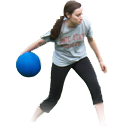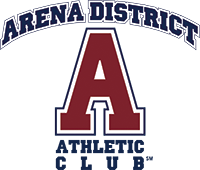
Feb 05, 2019
The 6 Best Ways to Recover from Your Workout
We know you’ve been hitting the gym hard and busting it in your training. But spending hours lifting might actually stall your progress. Recovery and rest are essential parts of any strength and conditioning program. Most coaches and trainers would argue it’s just as or more important than the lifting itself. Recovery must occur before you can make progress. It’s important for staying injury free, long-term consistent training, and maxing out from time to time. Follow these six tips to make sure you stay sharp.
1) Schedule “down” weeks and recovery workouts
The recovery process needs to be proactive, planned and effectively executed. It’s important to remember that you break your body down when you train (weights or cardio) – you deplete your energy stores; your muscles and other tissues break down and your body is in a fatigued state.
A lack of proper recovery can lead to overtraining otherwise known as under-recovery or over-reaching. Exhaustion can ensue if the training stimulus is too high or too frequent—so maxing on your bench every week is a big no-no! Worse yet, Overtraining Syndrome can develop if fatigue is not addressed, which can lead to a host of physiological and chemical changes. To put it simply, building fatigue upon fatigue results in the inability to adequately adapt, resulting in more fatigue, inflammation, missed lifts and shitty workouts.
2) Schedule ample recovery time between workouts
Delayed onset muscle soreness (DOMS) is a common sensation felt after lifting weights. Most trainees actually base the success or effectiveness of their training sessions on how sore they get; however, this is not a good way to think about your progress. Typically, DOMS is characterized by muscle tenderness, stiffness, and reduced joint range of motion, muscle flexibility and force production, about 24 hours after your training session. Compensating for muscle fiber damage and returning to the gym prematurely will increase your risk for injury potentially sending you in for physiotherapy.
3) Get some sleep
Research shows that lack of adequate sleep can decrease the reduce tolerance to training, alter mood, increase perception of fatigue and negatively affect the physiological mechanisms responsible for adaptation from the stresses of training. Hormonal secretion during sleep is one of the most important factors influencing recovery. After all, the purpose of sleep is to induce a state of recovery in the body. Anabolic (muscle-building) hormone concentrations and activity increase during sleep. Catabolic (muscle-wasting) hormone concentrations and activity decrease. Disrupted or shortened sleep will negatively influence the effects of these anabolic hormones.
4) Hydrate
Dehydration can reduce performance potential. It also delays the recovery process. Exercise and an increased metabolic rate both increase the body’s need for water and electrolytes. Research suggests that the minimum amount of fluid intake per day for males is 3.7L/day and 2.7L/day for females.
5) Get your nutrients
Recovery is a time where proper nutrition is essential. Your body requires protein sources to rebuild muscle tissue and to supply the building blocks for various cells, tissues, enzymes, and hormones. Depending on how often you train during the week, protein recommendations can range from 1.0 to 1.6 grams of protein per kilogram of body weight per day.
Carbohydrates, on the hand, are muscles major source of energy. Therefore, eating carbohydrates is essential at refueling your body’s glycogen stores. Your body refuels glycogen at a higher rate within 3.0 to 60 minutes post workout. Because of this, it’s important to consume a post workout snack or shake during this time. Research has shown that including a small amount of protein in this snack speeds up the rebuilding and recovery process.
6) Massage it out
Massage from a therapist or self-myofascial release (SMR) with foam rollers, massage sticks, and even baseballs can reduce muscle stiffness, promote circulation and induce a state of relaxation in the muscle. Although it might be painful during, but you can perform SMR the night of a hard workout to remove scar tissue, adhesions in the muscle and restrictions in the fascia.
by Jon-Erik Kawamoto
The Arena District Athletic Club is more than just a gym, it’s a premier fitness facility located in the heart of the Arena District in downtown Columbus. We provide convenience and quality, featuring top-of-the-line equipment, top-notch personal trainers, spa-like locker rooms and a wide variety of free group fitness classes daily including Cardio, Spinning, Barre Fusion, Yoga, Boot Camp and more. We offer free 2-hour parking and convenient contract-free memberships, to fit your healthy lifestyle needs. Don’t just join, belong.





